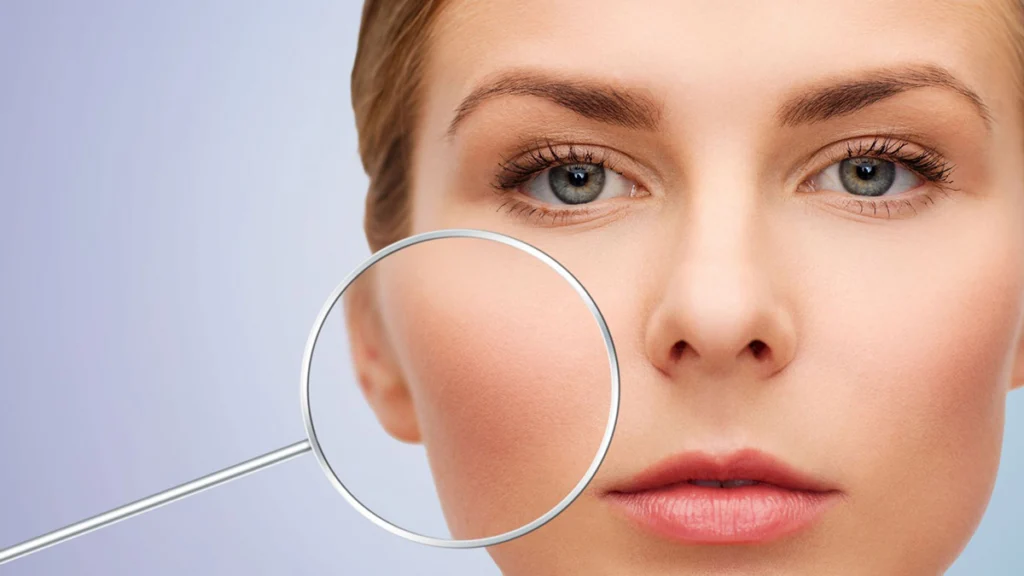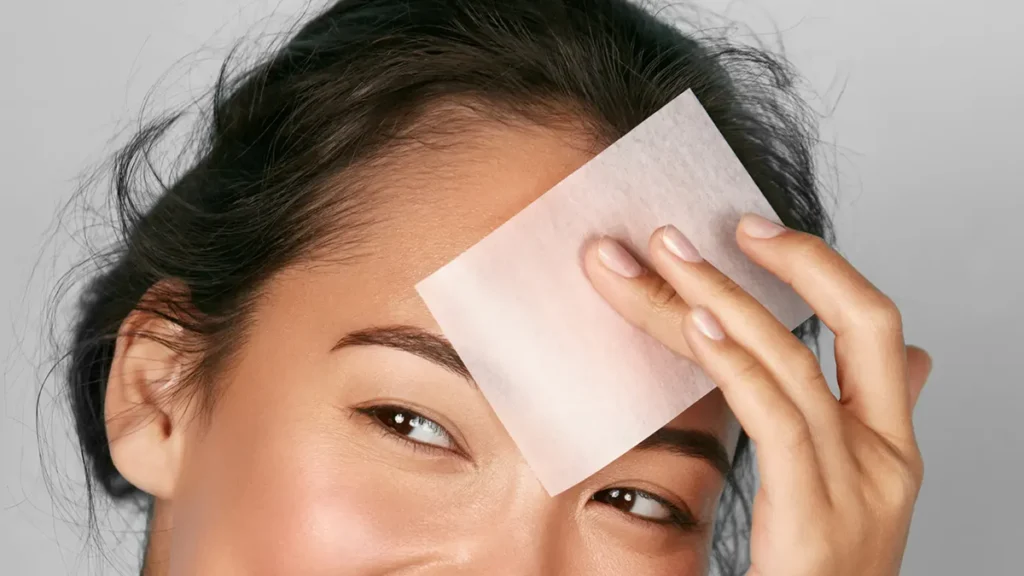Everyone has unique skin that requires different care. Using inappropriate products can worsen its condition, causing irritation or even acne. Therefore, it is important to know how to determine your skin type in order to provide it with optimal care and maintain its health.
What Differentiates Skin Types
The main types are normal, dry, oily, and combination. Sometimes sensitive skin is considered separately, but it is still either dry, oily, etc. Before figuring out how to determine your skin type, let’s break down what makes them different. Often, they can be distinguished even at first glance:
- Normal skin is the most balanced – neither too oily nor too dry. Occasionally, there may be slight tightness or shine, but overall its condition is stable. This type of skin is rarely prone to inflammation, irritation, or acne. It has an even tone and a healthy appearance, with good texture and minimal imperfections.
- Dry skin may appear matte and aristocratic but often looks dull and tends to flake. It feels tight and can be sensitive to weather changes or hard water. Wrinkles and fine lines may be more pronounced due to the lack of moisture. It requires constant care and hydration.
- Oily skin often looks radiant and healthy, but it frequently has excessive shine due to the overproduction of sebum. It is prone to acne, blackheads, and enlarged pores. However, it tends to stay youthful and elastic longer due to its high moisture levels. The main challenge is controlling sebum production and keeping pores clean.
- Combination skin combines excess oiliness in the T-zone with a normal state on other areas.
What Affects Skin Type
Many skin characteristics are genetically determined. However, factors like climate, stress, diet, and even hormone levels also influence the condition of the skin. For example, in a dry climate, the face becomes more dry and tight, while a humid climate can increase oiliness.
It’s crucial to understand how your environment and lifestyle affect your skin to choose the right care. For instance, dry skin in an arid climate will require more attention to hydration.
How to Determine Your Skin Type
There aren’t many methods to determine your skin type, but all of them are quite accurate. Using several methods will ensure accurate results. Remember that in order to properly determine your skin type:
- The face must be cleansed of dirt and makeup;
- At least 30 minutes must pass after washing (to restore the hydrolipid barrier after cleansing);
- The face should not have any cosmetic products (creams, serums, etc.) as they can distort the results and mask excessive oiliness or natural dryness.

How to Determine Skin Type Through Observation
How can you determine your skin type on your own at home? It’s easy. Sit comfortably in front of a well-lit mirror. You can use a magnifying mirror with a light. Now examine your face carefully:
- If the pores are large and visible, there are blackheads, and an oily shine – these are signs of oily skin.
- If pores are visible but not enlarged, blackheads are rare, and there’s no oily shine, congratulations – this is normal skin.
- If the above characteristics only apply to the T-zone (forehead, nose, chin) and there’s no shine or enlarged pores in the cheek area, this is a sign of combination skin.
- If pores are barely visible, no blackheads or oiliness, and the face looks matte or dull, with periodic tightness – this is dry skin.
How to Determine Skin Type Using a Tissue
This simple test can be done at home. After washing your face, wait 1-2 hours and press a tissue to your face. If it remains dry – you have dry skin. Women with this type usually can’t go an hour after washing without applying cream due to the strong feeling of tightness.
If the tissue becomes oily – you have oily skin. If only certain areas like the forehead or nose leave marks – your skin is likely combination. Normal skin will leave no noticeable traces, but there won’t be the same discomfort as with dry skin.

How to Determine Skin Type By Its Reaction to Various Factors
You can determine skin characteristics by observing how it reacts to different conditions:
- Dry skin often feels tight after washing, especially in cold weather.
- Oily skin becomes shinier and oilier in warm or humid weather.
- Combination skin shows reactions typical of both dry and oily skin in different areas of the face.
How the skin feels after washing can also provide clues:
- Dry skin will feel tight and will need moisture.
- Oily skin may appear matte but soon becomes shiny again.
- Normal skin feels comfortable, neither too dry nor too oily.
Analyzing skin condition after sleep:
- If the face looks greasy, with uneven color and redness, this is a sign of oily skin.
- If it’s tight or dry, with creases and peeling, it could indicate dry skin.
- If you’re having trouble determining, it’s likely combination skin. However, a visit to a specialist – a dermatologist or cosmetologist – can completely clarify your doubts.
How to Determine Skin Type – Video
To understand how to easily determine your skin type at home, watch the video:
Conclusion
We’ve explained how to determine your skin type through observation or using a tissue test. You can also visit a specialist for advice. Knowing your skin’s characteristics will help you choose the right care, eliminate problems, and always look great.
FAQ About How to Determine Your Skin Type
If different areas of your face are simultaneously dry and oily – this is a sign of combination skin. Usually, the chin, forehead, and nose are shiny, while other parts are normal or slightly dry.
Yes, hormonal fluctuations affect skin type and condition. For example, most of us have very oily skin during adolescence, while women often experience dry skin during menopause.
Diet doesn’t affect the type directly, but it can change the condition. For example, fatty foods and sweets trigger sebum production, while caffeine can cause dehydration.











